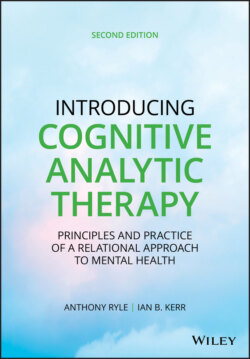Читать книгу Introducing Cognitive Analytic Therapy - Anthony Ryle - Страница 17
1
The Scope and Focus of CAT Summary
ОглавлениеCAT evolved as an integration of cognitive, psychoanalytic, and, more recently, Vygotskian and Bakhtinian ideas. It is characterized by a predominantly relational understanding of the origins of patient problems and symptoms and an explicitly empathic, pro‐active, and compassionate therapeutic stance, with an active focus on issues arising within the therapeutic relationship. From the beginning it has emphasized genuine therapist–patient collaboration in creating and using descriptive reformulations of presenting problems. As such it offers a respectful, whole‐person, “transdiagnostic” approach that represents a challenge to many prevalent “diagnosis”‐led services. The model arose from a continuing commitment to research into effective therapies and therapy integration, and from a concern with offering appropriate, time‐limited treatment in the public sector. Originally developed as a model of individual therapy, CAT now offers a general theory of development and psychotherapy with applicability to a wide range of conditions in many different settings and in various “contextual” and systemic approaches.
In order to locate cognitive analytic therapy (CAT) in the still expanding array of approaches to psychotherapy and counseling and to indicate the continuing developments in its theory and practice, its main features will be briefly summarized in this introductory chapter.
